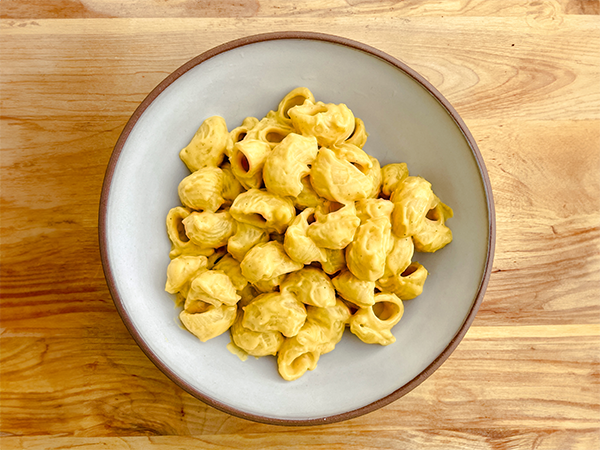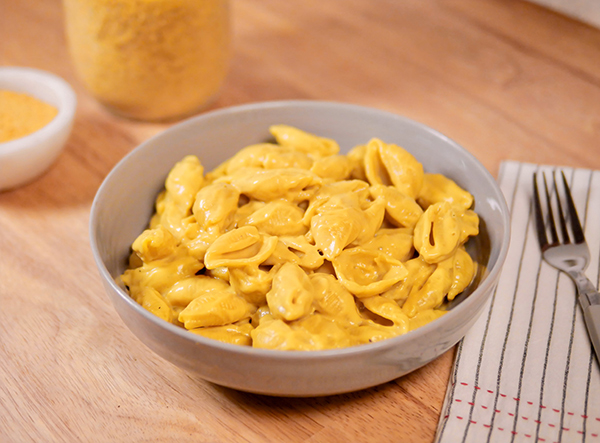As the world becomes more conscious of ethical choices, Tech Mahindra Ltd., a global IT giant, has actively supported the movement to reduce animal suffering. By participating in Vegan Outreach’s campaign, the Green Tuesday Initiative, Tech Mahindra has made significant strides in promoting plant-based food options. Institutions play a crucial role in this mission, as they can make kinder commitments for the planet like reducing their use of animal products. Here’s a look at our shared journey and key milestones from 2021 to 2024.
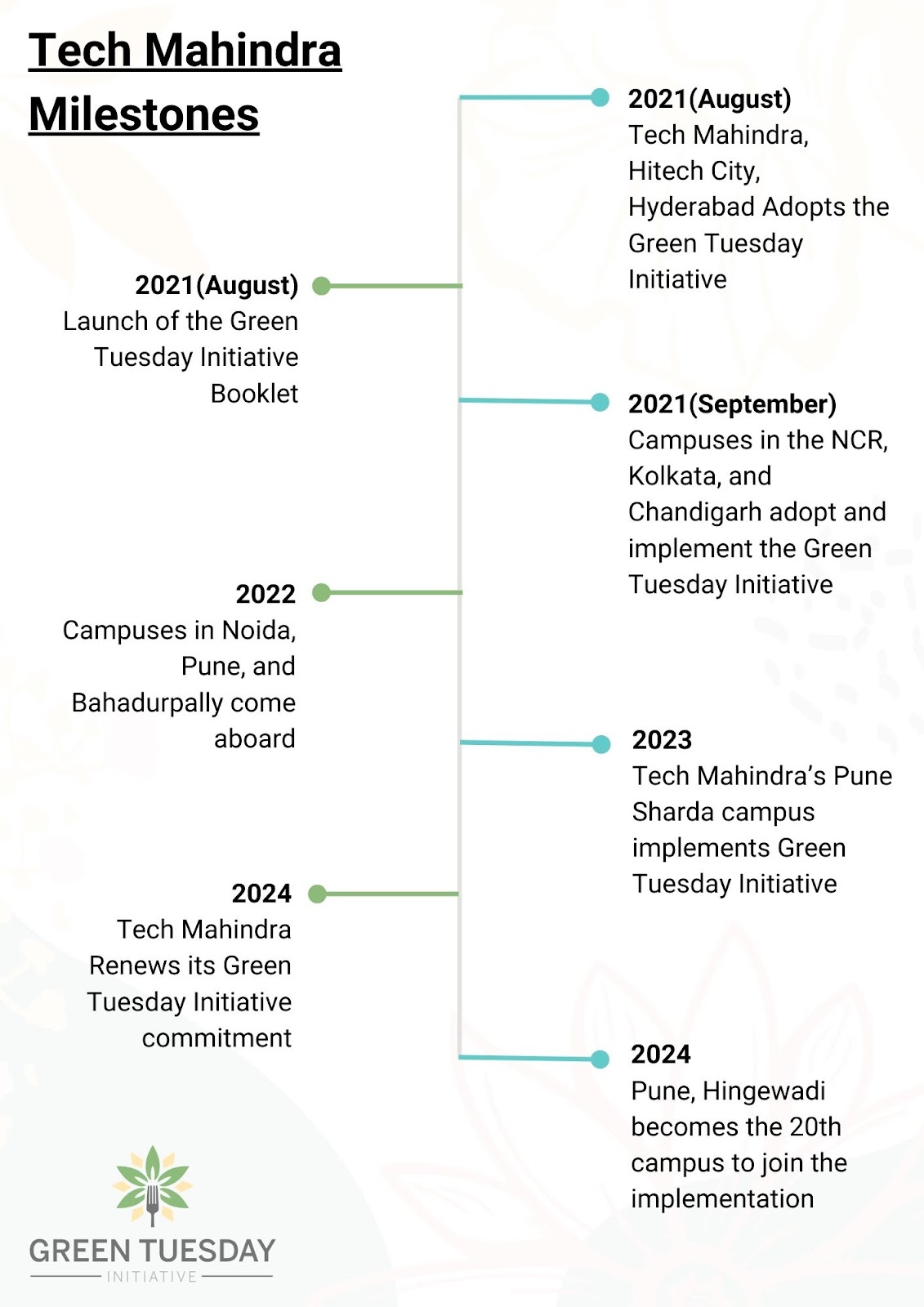 Timeline of Tech Mahindra Ltd’s Green Tuesday Implementation milestones since the start of the collaboration in 2021.
Timeline of Tech Mahindra Ltd’s Green Tuesday Implementation milestones since the start of the collaboration in 2021.
2021: The Beginning
August 15, 2021 – Tech Mahindra Hitech City Hyderabad Adopts Green Tuesday Initiative
Our journey with Tech Mahindra commenced in April 2021, with extensive discussions and planning. By August, our collaborative efforts bore fruit. On August 15th, 2021, Mr. C P Gurnani, Former CEO and MD of Tech Mahindra, launched the Green Tuesday Initiative at their Hitech City campus in Hyderabad. This event marked the beginning of a significant shift towards reducing animal product consumption, including meat, dairy, and eggs, in their cafeterias by 20% by introducing “Vegetarian Tuesdays.”
Launch of Green Tuesday Initiative Booklet
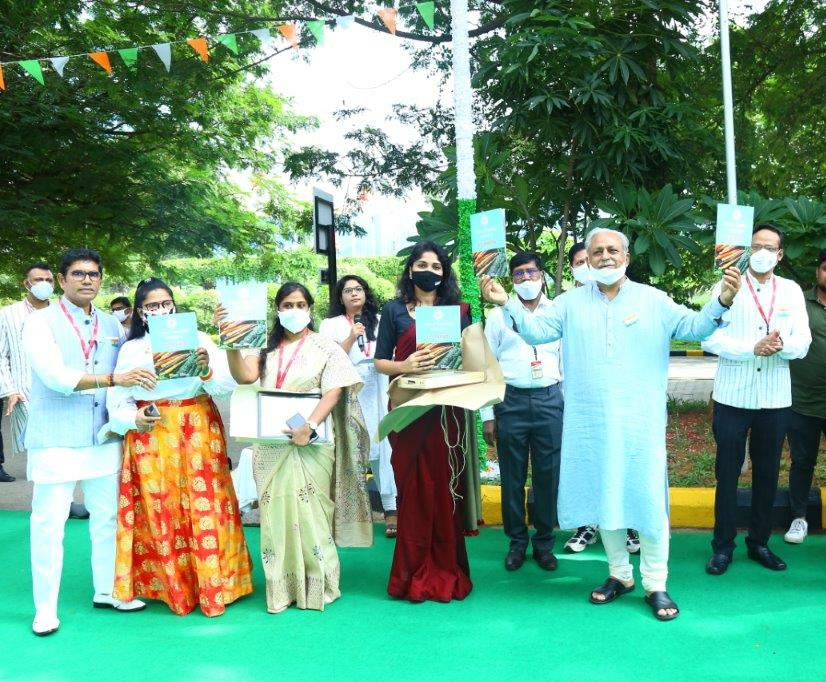
During an accreditation event on 15th August 2021 at the Hitech City campus, the Green Tuesday Initiative Booklet was officially launched, outlining the program’s objectives and expected outcomes.
September 28, 2021 – Expansion to North Zone Campuses
Following the successful launch in Hyderabad, the Green Tuesday Initiative quickly expanded. On September 28, representatives from Tech Mahindra’s Noida, Gurgaon, Kolkata, and Chandigarh campuses gathered for a virtual accreditation ceremony, furthering the initiative’s reach. By the end of 2021, 13 campuses had adopted the Green Tuesday Initiative and replaced meat and dairy with plant-based options once a week on their cafeteria menu.
2022: Widening the Impact
Tech Mahindra Noida Campuses Join the Green Tuesday Initiative
In 2022, the Green Tuesday Initiative saw substantial growth. The 14th campus of Tech Mahindra in Noida adopted the initiative, demonstrating its commitment to reducing animal suffering. The Noida campuses were soon joined by the Pune and Bahadurpally campuses, collectively increasing the impact of our efforts to minimize animal exploitation.
2023: Sustained Growth
Tech Mahindra Pune Sharda Campus Comes Onboard
The momentum continued into 2023 with the addition of the Tech Mahindra Pune Sharda Campus. This campus played a crucial role in promoting plant-based food options among employees and reducing the overall consumption of animal products by inviting the Green Tuesday Initiative to conduct awareness sessions and streamline the implementation process.
2024: Reaching New Heights
Commitment Renewed for the 4th Consequent Year and Tech Mahindra Pune Hingewadi Campus Becomes 20th Campus to Come Aboard!
Our collaboration reached new heights in 2024 after the Tech Giant renewed its commitment to implement the Green Tuesday Initiative for another year. The Tech Mahindra Pune Hingewadi Campus became the newest campus to adopt the initiative. Now, our joint efforts extend to 20 campuses across seven locations, significantly reducing the consumption of meat and dairy products.
Achievements and Impact
Cumulative Animal Product Reduction:
- Chicken: 3,618,050 lb
- Eggs: 655,200 Nos.
- Paneer: 275,137 lb
- Milk: 9,231,228 fl oz
Events
Reducing the consumption of animal products is crucial, as animal agriculture directly impacts climate change through greenhouse gas emissions, affects public health, and endangers biodiversity. Producing high-animal-product foods is resource-intensive, consuming significant water and land while contributing to deforestation and habitat loss.
Awareness activities are essential as they help spread critical information about the effects of animal agriculture on climate change, health, and sustainability. By raising awareness, we empower employees to make informed decisions that reduce animal exploitation and create a positive impact on the environment and their well-being.
“Reducing our reliance on animal products is essential for mitigating climate change and preserving biodiversity. Studies show that animal agriculture is responsible for significant greenhouse gas emissions. Additionally, research from the University of Oxford highlights that shifting towards more plant-based diets can reduce food’s environmental impacts by up to 73%. By adopting policies that reduce animal product consumption, we can take meaningful steps towards a healthier planet and population,” said Bhavya Vatrapu, Senior Campaign Manager, India and Vietnam.
Tech Mahindra facilitated the following Green Tuesday Initiative events to raise awareness among employees:
“Food Planet Health” Workshop
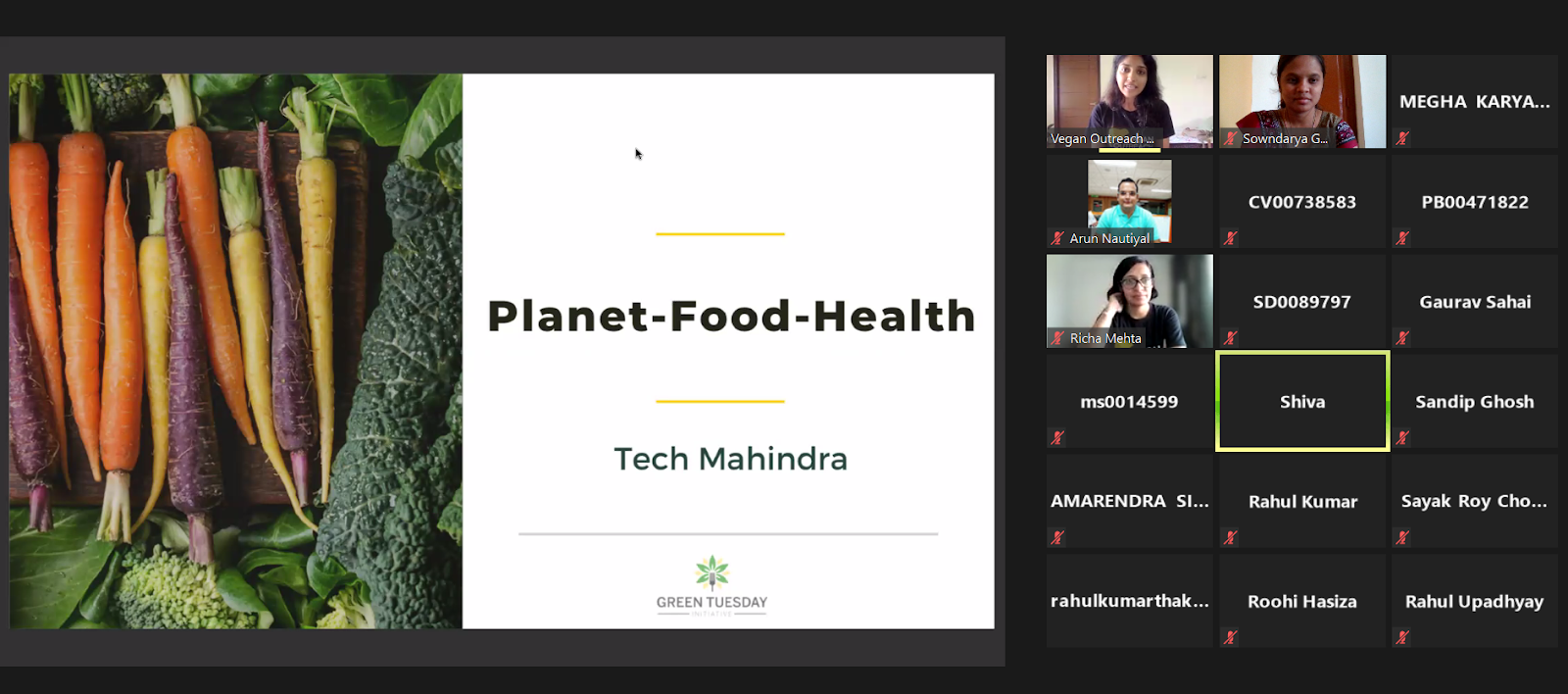
In September 2021, we organized a virtual “Food Planet Health” workshop for facility teams from Hyderabad, Noida, Gurgaon, Kolkata, and Chandigarh. This workshop addressed the interconnected issues of food, planetary health, and human well-being, promoting discussions on reducing animal exploitation through food choices.
Health Talk Session
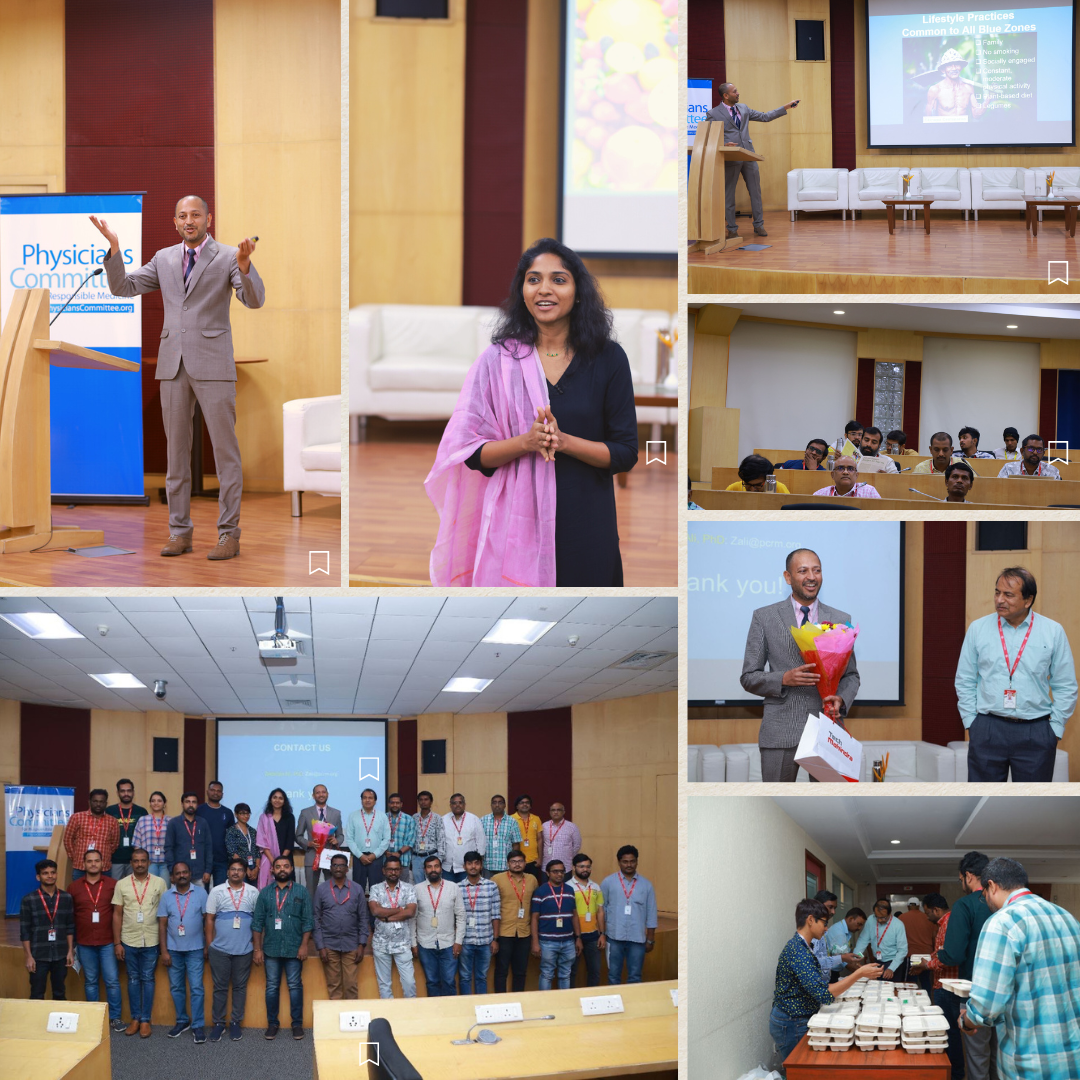
In March 2023, Dr. Zeeshan Ali from the Physicians Committee for Responsible Medicine conducted a talk session on “Leading a Disease-Free, Healthy Life and Reversing Lifestyle Diseases through Diet” for employees at the Hitech City campus, emphasizing the health benefits of plant-based diets in March of 2023.
Green Tuesday Implementation Discussions
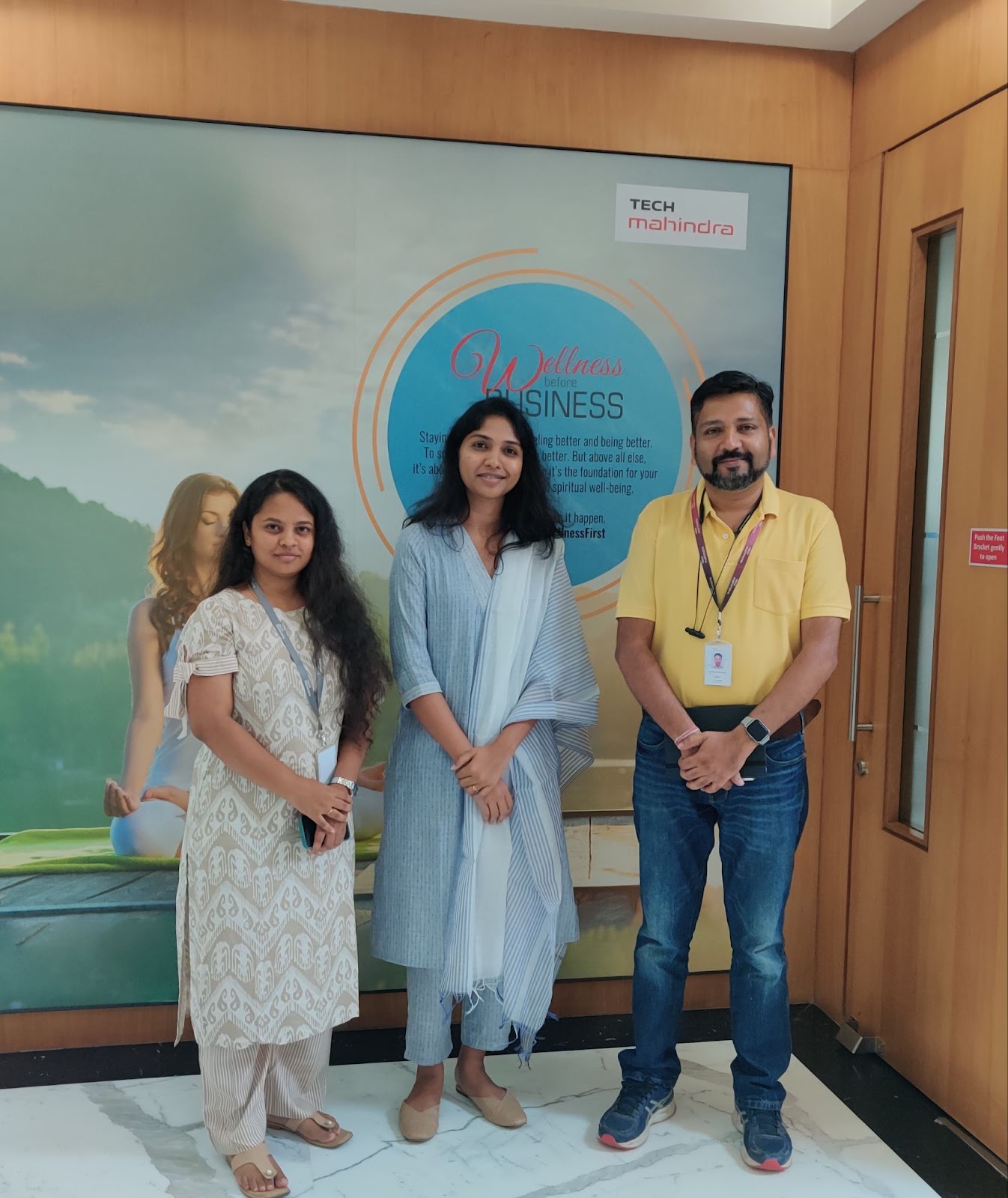
In June 2023, we organized interactive sessions with the Pune Sharda campus facility head to streamline the Green Tuesday Implementation and address operational challenges.
Why Green Tuesday Initiative: A Refresher
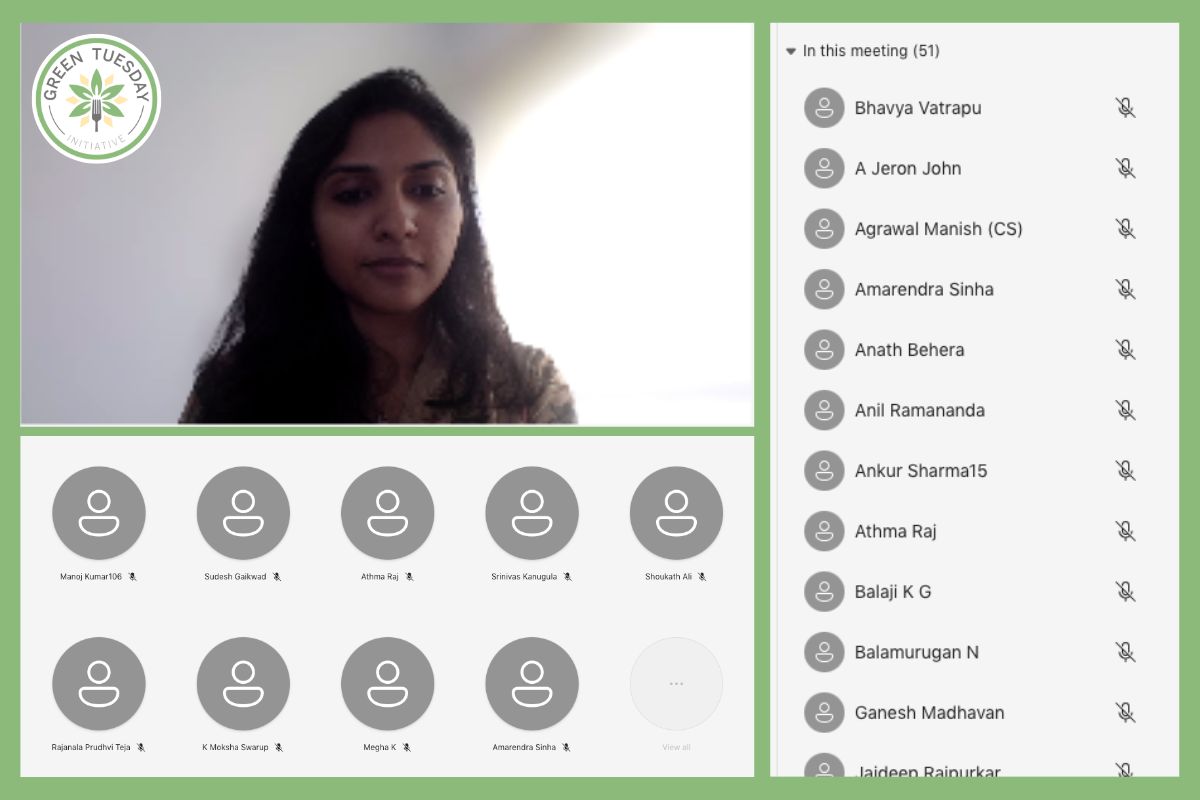
We organized refresher sessions to ensure smooth implementation even with staff change. In July 2024, we organized a second refresher session with the center and facilities heads to update the new staff.
Testimonial
“Tech Mahindra is always at the forefront of taking sustainability and environment-related initiatives. From hosting plastic-free events to organizing the most extensive plantation drives, Tech Mahindra has always encouraged and inspired us to make an impact and keep doing more. By implementing vegetarian Tuesdays, we are taking one step forward in reducing our food-related carbon footprint and creating awareness about the food choices of employees. Next year, we will work with Vegan Outreach to implement this initiative on more campuses in other cities. Our team is also working to create a soulful, delicious alternative menu on Tuesdays.”
– C V N Varma, Vice President – Corporate Services at Tech Mahindra (2001)
Our collaboration with Tech Mahindra demonstrates the powerful impact organizations can have when they commit to reducing animal suffering. The milestones achieved from 2021 to 2024 set a benchmark for other corporations to follow. As we continue to work towards a future with less animal exploitation, we look forward to achieving even greater milestones in the years to come.
For more information about the Green Tuesday Initiative and how your organization can make a positive impact on reducing animal suffering, please contact Bhavya Vatrapu, Senior Campaign Manager, India and Vietnam.
Email: [email protected]
Phone: +91 82910 43901
Join us in creating a compassionate future, one meal at a time.
About Green Tuesday Initiative:
Green Tuesday Initiative is a prolific campaign by Vegan Outreach (501c3 nonprofit in the USA) to help corporations and educational institutions reduce their environmental footprint by making small changes in the food they serve. Visit us at www.greentuesday.org
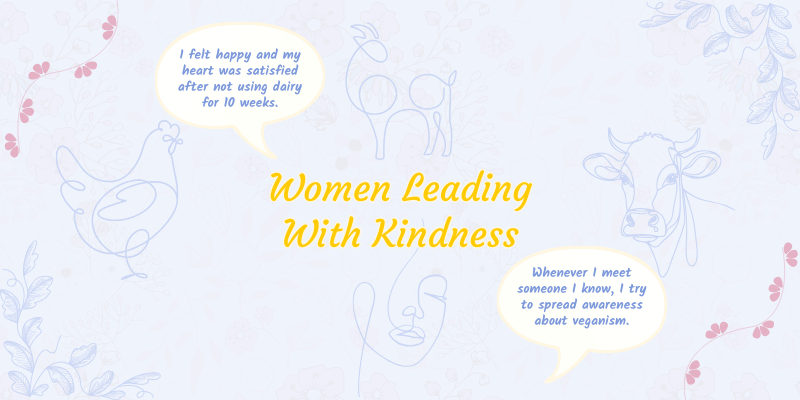





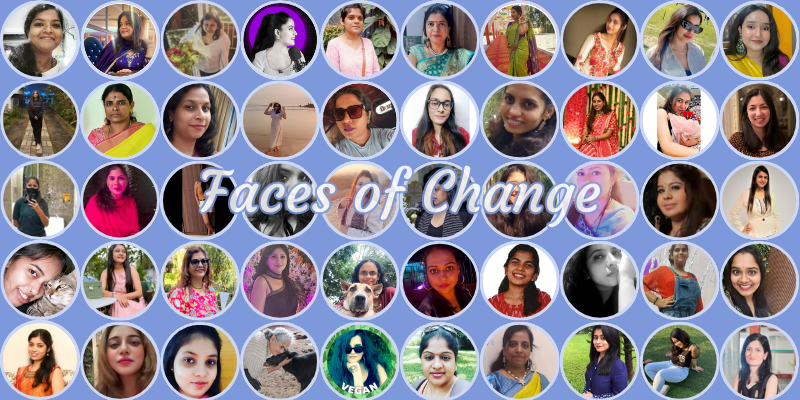

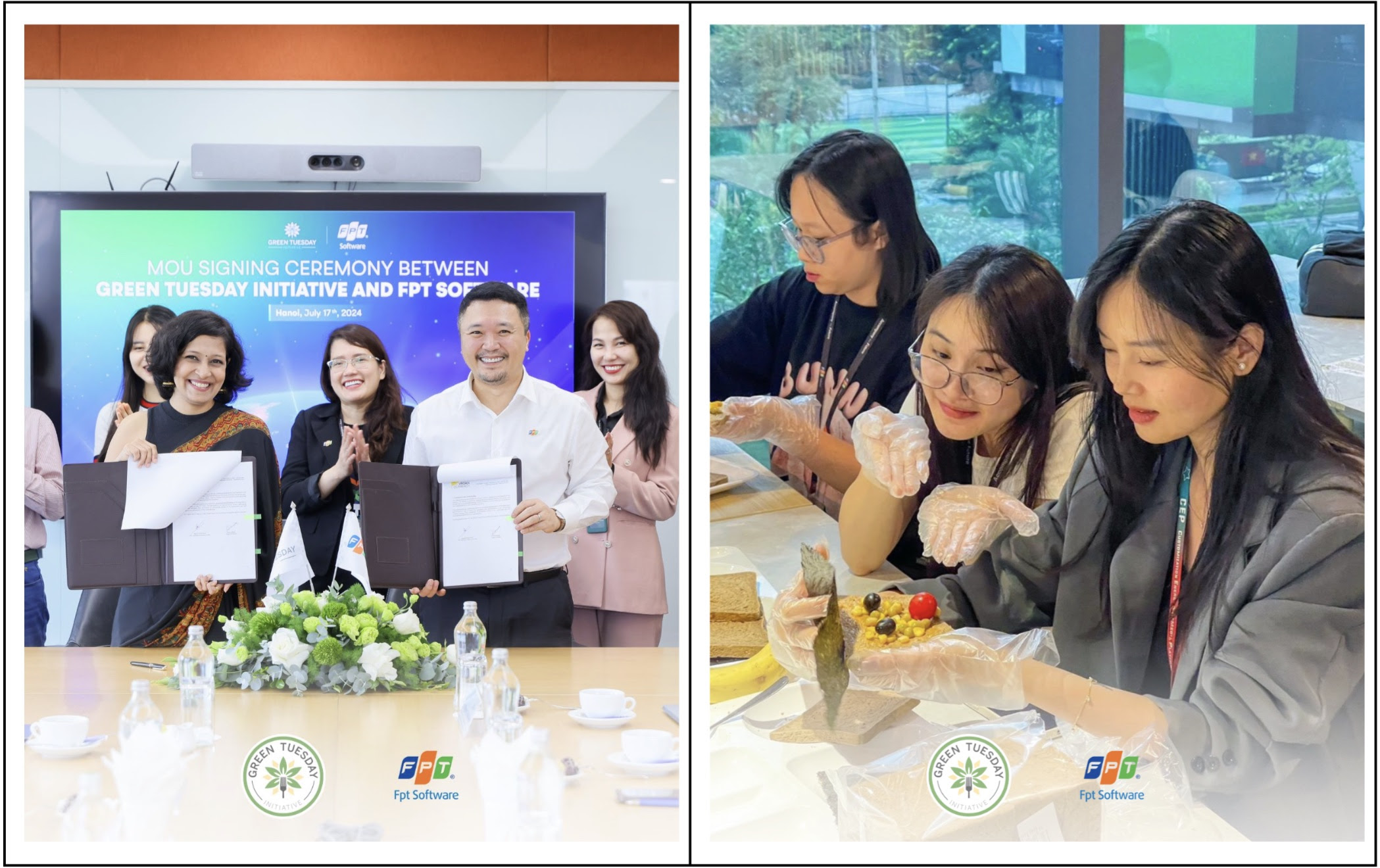 MoU signing ceremony at the FPT Software office in Hanoi (L). Employees participating in the plant-based cooking workshop at the FPT Software Hanoi Campus (R).
MoU signing ceremony at the FPT Software office in Hanoi (L). Employees participating in the plant-based cooking workshop at the FPT Software Hanoi Campus (R).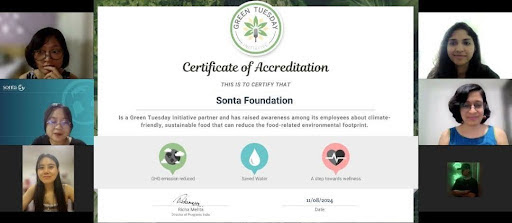
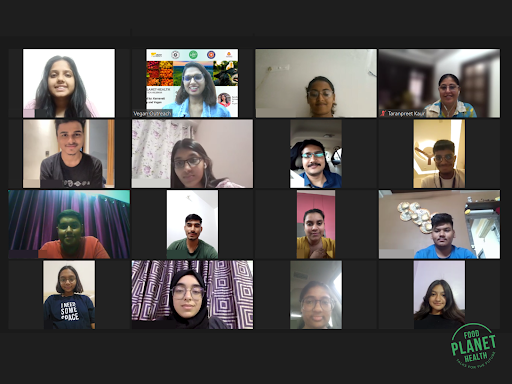
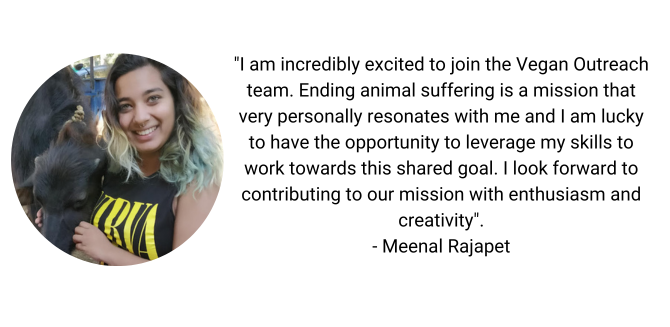
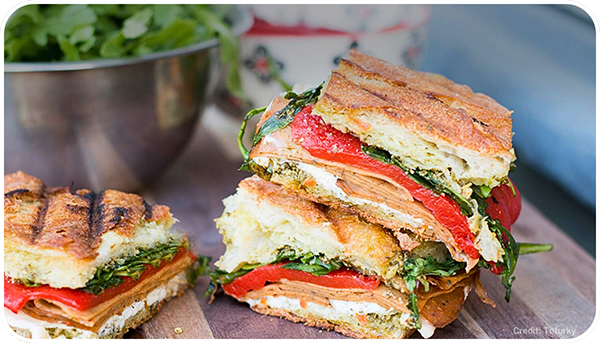
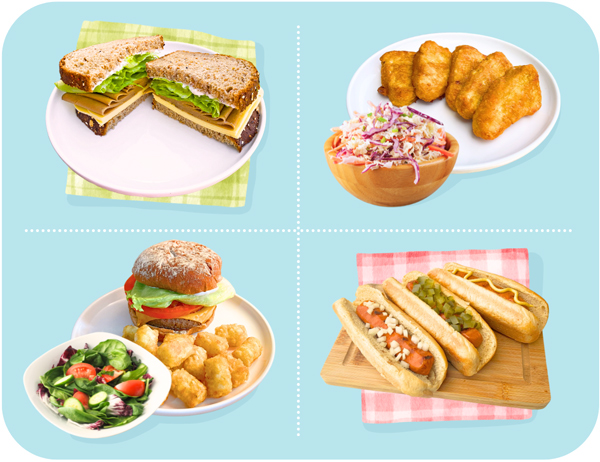
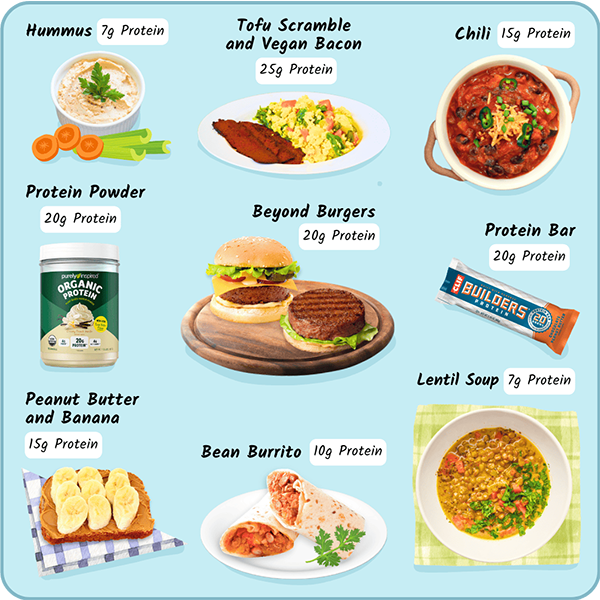






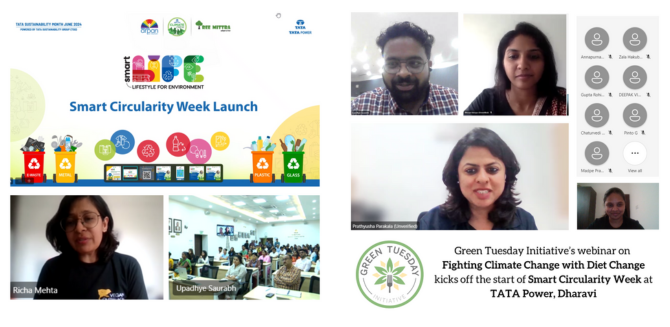 Awareness webinars organized at TATA Power.
Awareness webinars organized at TATA Power.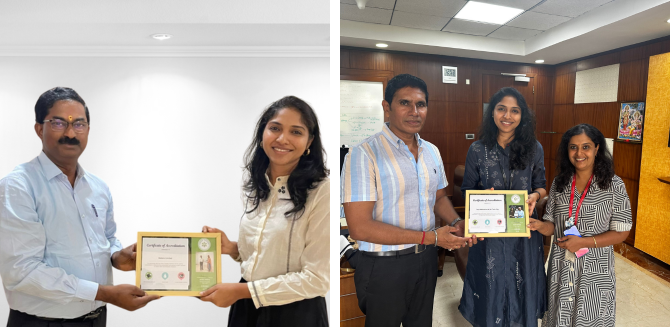 Awareness webinars organized at TATA Power.
Awareness webinars organized at TATA Power. Left: One of our Food Planet Health sessions at CSK Himachal Pradesh Agriculture University. Right: Our Outreach Coordinator, Nija Dhillon, conducting a Food Planet Health session at ITI, Tarsali.
Left: One of our Food Planet Health sessions at CSK Himachal Pradesh Agriculture University. Right: Our Outreach Coordinator, Nija Dhillon, conducting a Food Planet Health session at ITI, Tarsali.